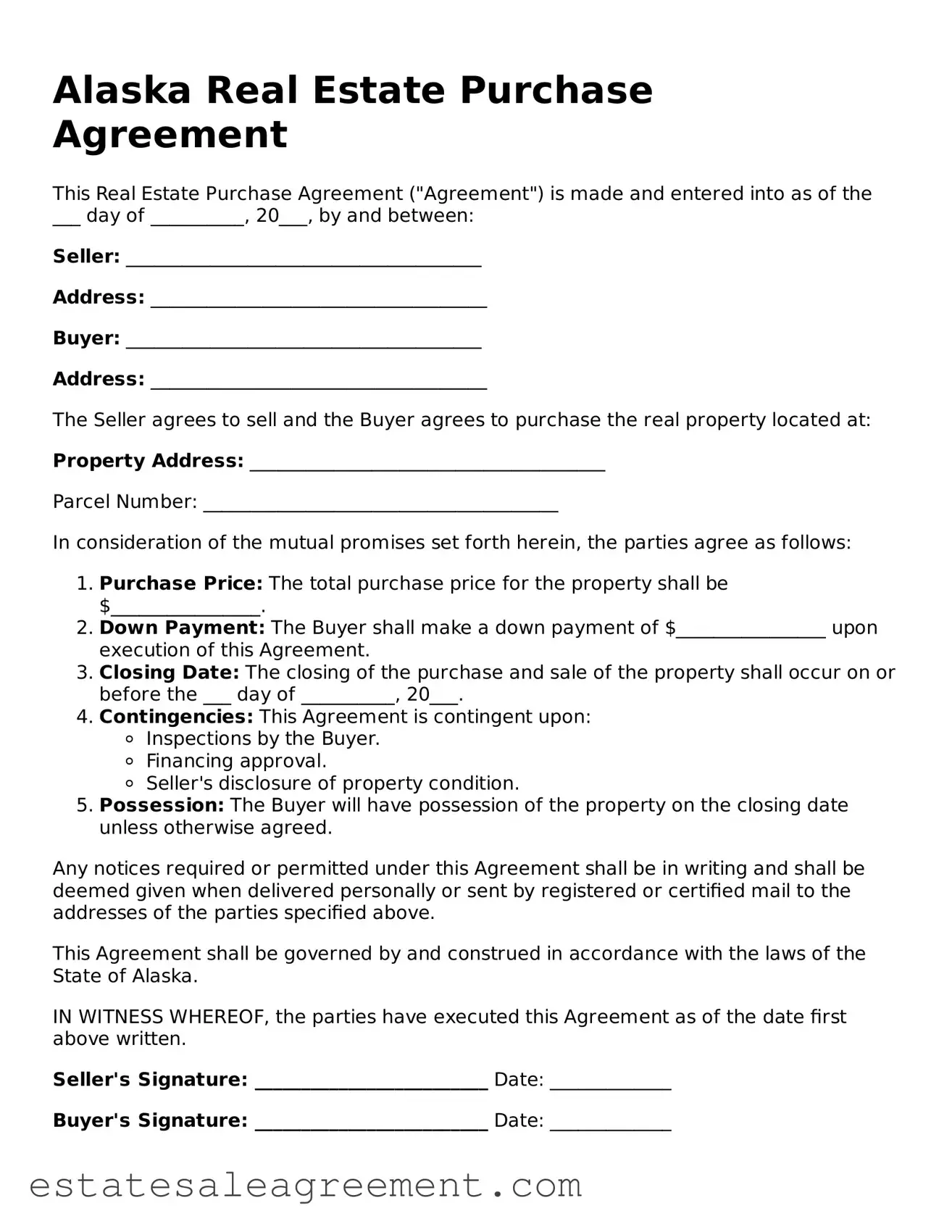Alaska Real Estate Purchase Agreement
This Real Estate Purchase Agreement ("Agreement") is made and entered into as of the ___ day of __________, 20___, by and between:
Seller: ______________________________________
Address: ____________________________________
Buyer: ______________________________________
Address: ____________________________________
The Seller agrees to sell and the Buyer agrees to purchase the real property located at:
Property Address: ______________________________________
Parcel Number: ______________________________________
In consideration of the mutual promises set forth herein, the parties agree as follows:
- Purchase Price: The total purchase price for the property shall be $________________.
- Down Payment: The Buyer shall make a down payment of $________________ upon execution of this Agreement.
- Closing Date: The closing of the purchase and sale of the property shall occur on or before the ___ day of __________, 20___.
- Contingencies: This Agreement is contingent upon:
- Inspections by the Buyer.
- Financing approval.
- Seller's disclosure of property condition.
- Possession: The Buyer will have possession of the property on the closing date unless otherwise agreed.
Any notices required or permitted under this Agreement shall be in writing and shall be deemed given when delivered personally or sent by registered or certified mail to the addresses of the parties specified above.
This Agreement shall be governed by and construed in accordance with the laws of the State of Alaska.
IN WITNESS WHEREOF, the parties have executed this Agreement as of the date first above written.
Seller's Signature: _________________________ Date: _____________
Buyer's Signature: _________________________ Date: _____________
